Learning To Drive A Car
Learning to drive a car is easy with the following guide. This includes safety driving tips, videos on how to drive a car (either manual or automatic transmission), and also tips to handle a car during emergencies. There are three “Ps” you need to know: Preparation, Precaution, and Practice. Preparation is what you need to do before sitting on the driver’s seat; Precaution is what may happen while driving; Practice is what every driver needs to do to improve their skills.
Preparation
Most people will feel panic for the first time. People who have excessive hand sweating or sweaty palms may consider putting on a pair of driving gloves. Driving gloves allow a softer and better grip on the steering wheel. A firm grip on the steering wheel allows more control and also increases the safety at high speed.
Sitting position
The sitting position is very important in order to control a car well. Adjust the driver’s seat for proper leg room that fits you the best. Slight, tilt, and seat angle are what you need to adjust. Slight the seat to a position where your foot can operate the pedals with your back supported by the seat. It is not good if the seat is too far from the pedals because your foot may not reach them especially driving uphill. If the seat is adjusted too close to the pedals, the driver may suffer from leg cramp.
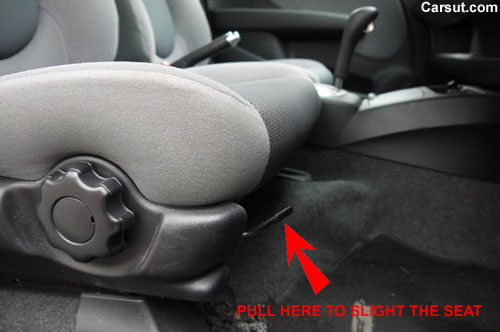
(Pull it to slight the seat to the best position)
People often tilt the driver’s seat to a wrong position. The seat should be tilted to make you feel more comfortable while driving.

The button to adjust the seat angle is usually located near to your back. The best angle is between 100 to 110 degrees because this angle supports your body weight and maintains an attentive posture. The picture shown here is a driver seat from a Honda Fit (Honda Jazz). Different cars will have different ways to adjust the seat, car seats in some suitably equipped cars can be adjusted using electronic controls.
Learn the dashboard symbol
Before getting into a car, you need to understand how a car runs. Every dashboard symbol means something to the driver. You will need to find it out from the owner’s manual. Here are the basic three symbols you need to know:
1. Brake system warning light
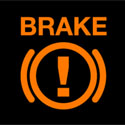
If this symbol light is on, it means the e-brake is engaged. New drivers always forget to release the e-brake and just step on the gas pedal to run the car.
2. Low Fuel

This symbol means the car is running out of gasoline or petrol. If you see the light is on and the driving distance is far, please go to the nearest petrol station and top up the petrol.
3. Engine warning light
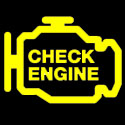
You can definitely see this symbol in most cars. This symbol indicates that the engine oil level is too low. The lights should extinguish as soon as the engine starts.
Do not carry extra passengers
Having an instructor sitting beside is good, but it is not advisable to carry extra passengers when you are learning to drive a car. Extra passengers may distract you while driving. It is also recommended to switch off your mobile phone to avoid distractions.
Understand traffic rules
It is a must to have a Learning License or Student Driver Magnets to be able to drive on the road. For new drivers, it is recommended to learn at housing areas or places with less traffic. You will need to understand some basic traffic rules including:
- Do not hit a pedestrian.
- Do not speed over the limit.
- Do not beat red light.
- Do not cross lane. Keep to your own lane.
- Do not over take if it is prohibited.
- Do not drive on the wrong direction of a one-way street.
- Make sure the road is clear before making a turn.
- Stop at red signal before the stop line.
- Give signals when you want to make a turn and follow the correct lane when turning.
- No texting while driving.
Understanding the car
It is advisable using cheap cars for your learning. This can reduce the pressure in you. Otherwise, pick an easy-to-control car such as the Honda Fit, Toyota Yaris, Mazda Mazda2, Chevrolet Sonic, Ford Fiesta, Hyundai Veloster, Mini Cooper, Kia Soul, Smart Fortwo, Honda City, Nissan March, Perodua Myvi, Toyota Prius C, and Honda Brio.
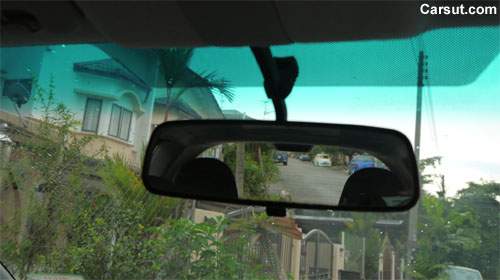
A standard car will have a steering wheel, a gear knob, a rear view mirror, two side mirrors, as well as a speedometer to show the speed of the car. Adjust the rear view mirror so that you can clearly see what is coming from behind. Also adjust both the side mirrors to a position where you can clearly see both sides.
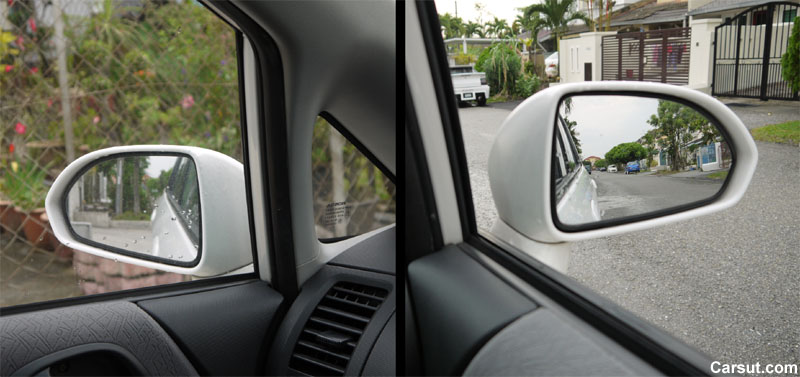
Understand that there are manual transmission car and automatic transmission car. A manual transmission car will have a manual gear knob with numbers on it. It also has three pedals: clutch pedal, brake pedal, and accelerator/gas pedal. An automatic transmission car or automatic car will have only two pedals for brake and gas. If you are ready, choose one of the guides below based on the transmission mode in your car:
You can also learn these techniques to improve your driving skills.
- How to parallel park a car
- How to drive uphill for a manual car